
Francine Mullen
Operations and Development Specialist
The Anatomy of an Avalanche Forecast
Every day we go into the mountains, we need to be aware of the current avalanche hazards in order to come home safe at the end of the day. As an avalanche center, we strive to give the most accurate avalanche forecast to YOU every single day during the riding season. So what variables about snow and weather are included in these daily forecasts, and what can they tell us about avalanche hazards? The avalanche forecast includes these main components:
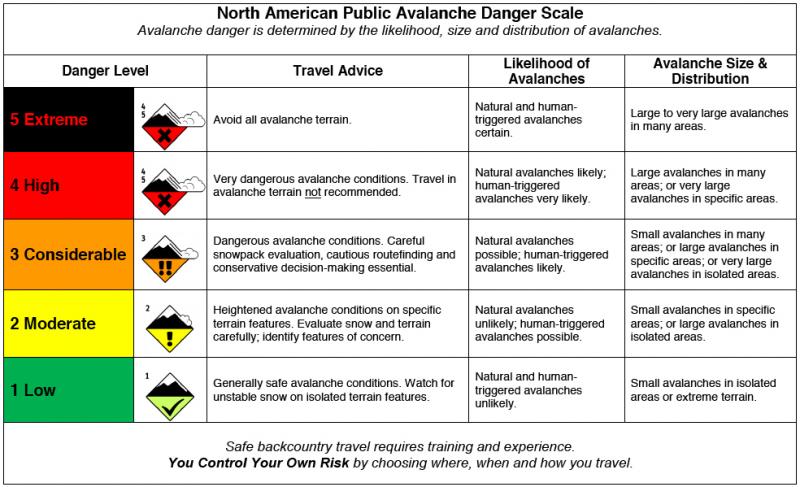
Danger Rating: The avalanche danger scale is used by avalanche forecasters to relay the current avalanche hazard to the public. The scale, composed of five danger ratings (low, moderate, considerable, high, and extreme), increases exponentially with each jump in rating. While close to 90% of avalanche fatalities occur when the hazard is moderate or higher, low danger never means “no danger”.
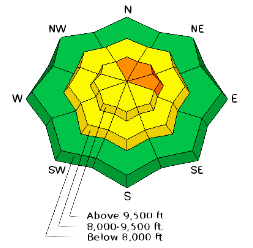
Danger Rose: The danger rose is used to depict avalanche hazards on varying aspects and elevations. The rose is designed to represent a perfectly conical mountain viewed top-down, for example, the top section represents north-facing low-elevation areas. Learn more about the Danger Rose here.
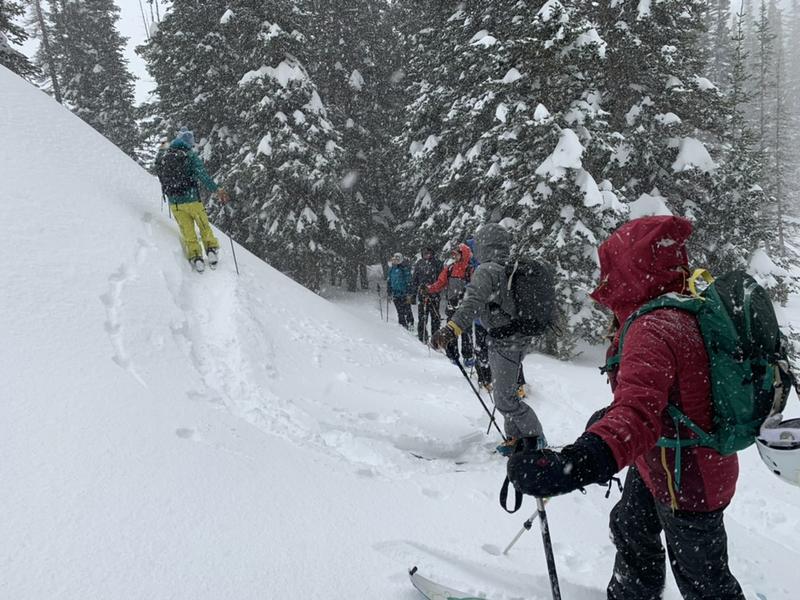
Weather: If the snowpack is the carpenter that builds an avalanche, the weather is the architect. Snowfall, wind, and temperature can all contribute to avalanche danger, therefore, we are always paying attention to mountain weather.
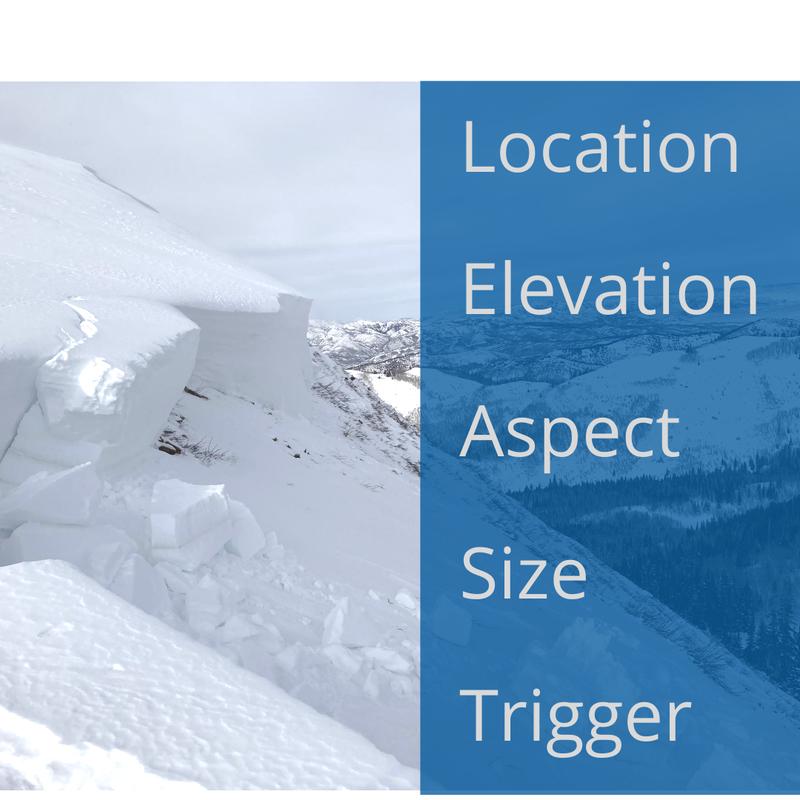
Recent Avalanches: Recent avalanches are not only 1 of the 5 red flags, but are also important information to be shared for the entire backcountry community. The important information to be considered when seeing an avalanche in the field:
-
The location of the avalanche
-
What elevation was the avalanche observed at?
-
What aspect was the avalanche on?
-
How big was the avalanche?
-
What was the trigger?
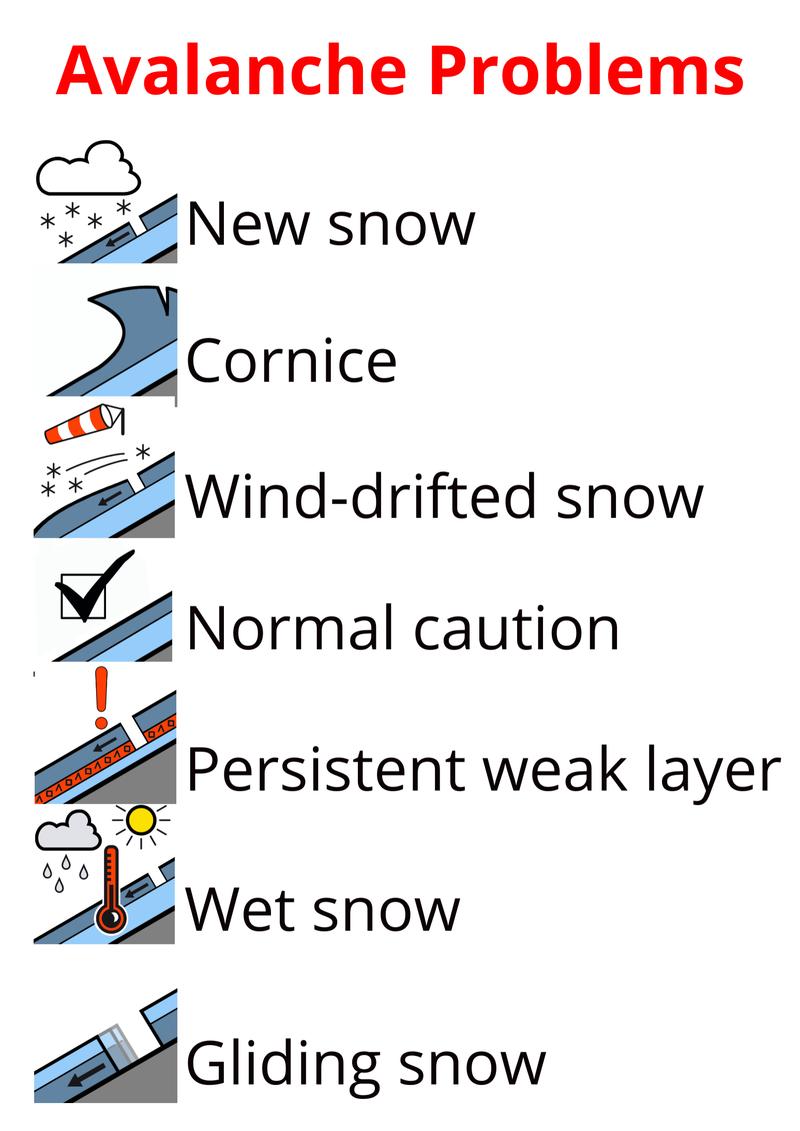
Avalanche Problems:
The avalanche problems are used to describe the type of avalanche, location, likelihood, and size. Often when describing the avalanche problem, we include travel advice and how to manage that problem based on the weather and snowpack conditions for the period of time. As mentioned above, the four factors used to describe the avalanche problems are:
1. Avalanche type: The Utah Avalanche Center includes 6 different types of avalanches when describing avalanche problems. Those include:
-
New Snow
-
Wind Drifted
-
Persistent weak layer
-
Wet Snow
-
Gliding Snow
-
Cornices
2. Location: Much like the danger rose, the location rose is used to identify where the avalanche problems most likely exist. Read more about the location rose here.
3. Likelihood: The likelihood scale shows how likely it is to trigger an avalanche for that specific problem.
4. Size: The size scale shows, if triggered, the size of an avalanche based on the specific problem.
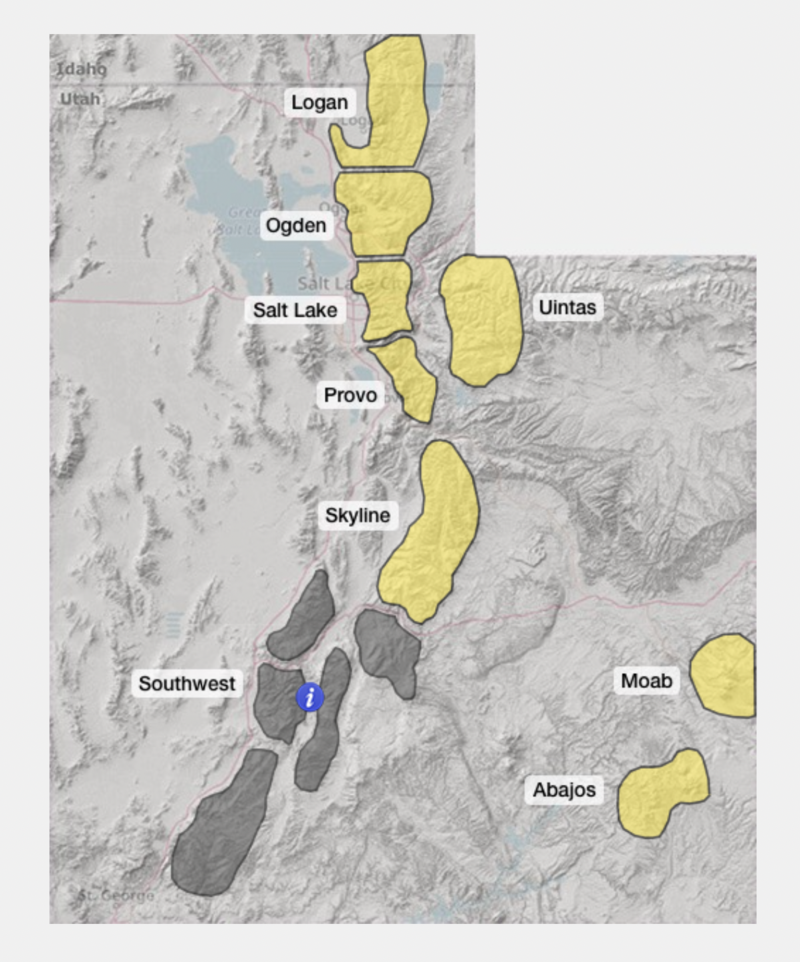
At the very bottom of the forecast, additional information can be found like upcoming events and general announcements. The avalanche forecast is produced daily by our forecasting team for each region in the state of Utah. Those regions include: Logan, Ogden, Salt Lake City, Provo, Uintas, Skyline, Moab, and Abajos.
If you’ve read this far, you are really invested in understanding and utilizing the UAC’s avalanche forecasts. Thank you for your commitment to avalanche safety! Please help the UAC continue to improve and expand our forecasting services by making a donation to the 2022 Spring Campaign today.






